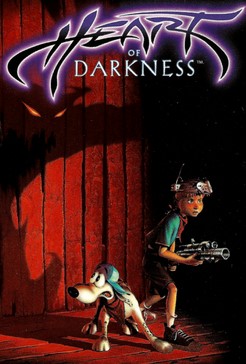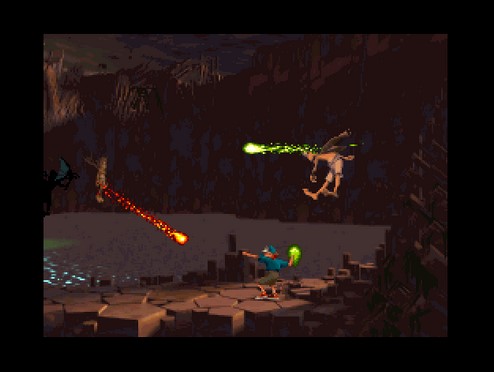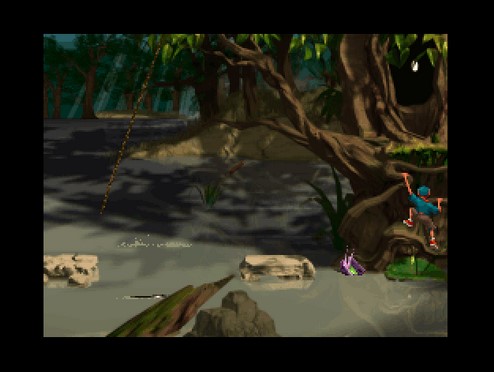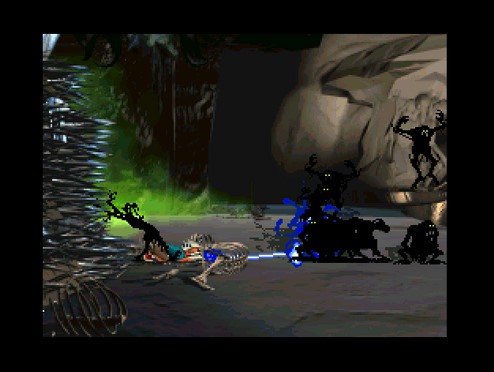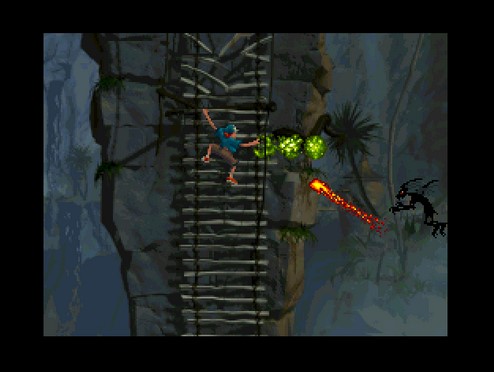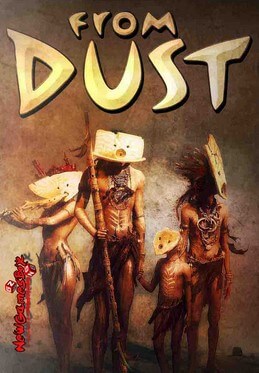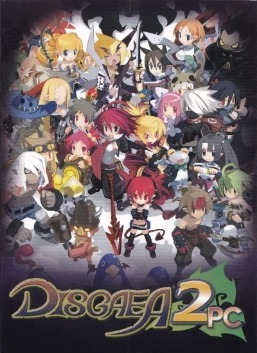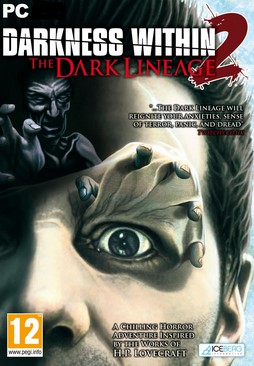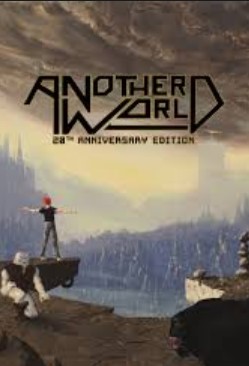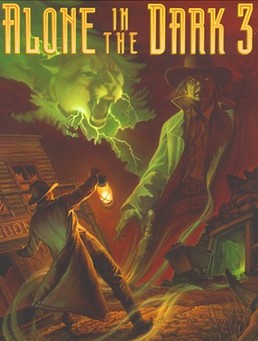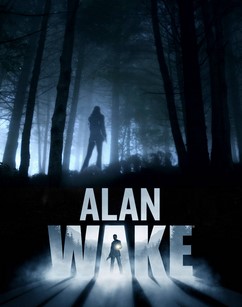Heart of Darkness is a cinematic platform video game developed by Amazing Studio, published by Infogrames Multimedia in Europe and Interplay Productions in North America and distributed by Tantrum Entertainment and Infogrames for PlayStation and Microsoft Windows. A Game Boy Advance port was announced in 2001 but it was never released.
The game places players in the role of a child named Andy as he attempts to rescue his dog who has been kidnapped by shadow-like spectres. The game has about half an hour of storytelling cinematic sequences, thousands of 2D animated frames, and uses pre-rendered background scenery. The game was supervised by game developer Éric Chahi, known for Another World, this time with a team of artists and developers. The game also features an original score by film and television composer Bruce Broughton.
Gameplay
Heart of Darkness is a cinematic platformer in the vein of Eric Chahi's previous game Another World in which players control Andy, who faces various dangers in search of his dog, Whisky. Players progress through the game's linear storyline by navigating various environments and solving puzzles, all whilst attempting to keep Andy from being killed by evil shadows, hungry wildlife, and perilous obstacles. Along with basic movement, such as running, jumping, and climbing, certain sections of the game give Andy additional abilities. The plasma cannon allows Andy to shoot lightning at shadows in order to disintegrate them. The Special Powers, which can also be used offensively against enemies, can additionally be used to grow and destroy trees born from seeds. The player has unlimited tries, with Andy returning to the most recent checkpoint when he is killed.
Plot
The game begins with the protagonist; a young boy known as Andy being abused by his teacher for sleeping in class where it is revealed that he has nyctophobia (fear of the dark). Being instructed that same day by his teacher to watch the solar eclipse, Andy takes his beloved dog Whisky to the park where dark forces steal Whisky away, prompting Andy to use his assortment of inventions and machines to get him back. Andy travels to another world called the Darkland in a homemade spaceship which promptly crashes and he has to face an assortment of obstacles to rescue Whisky and find his way home.
Throughout the game, Andy is tasked with fighting living shadow creatures and dark monsters while traversing several hostile alien environments such as a canyon, swamp, underwater cave, and lava river. He receives help in this quest from a peaceful alien race called Amigos whom he befriends, and from magic powers he obtains from a meteor referred to as the 'magic rock.' The main antagonist is an evil sorcerer known as the Master of Darkness who intended to capture Andy instead of his dog. Somewhat resembling Andy's teacher from the beginning of the game, the Master of Darkness has an interest in capturing Andy and sends his minions to pursue him. Another major antagonist is the Vicious Servant; a sniveling pink creature that serves the Master but is quick to betray him for personal benefit.
After traveling across the varying alien environments and fighting alongside the Amigos, Andy finds himself inside the Master of Darkness' lair where he proceeds to free Whisky and join forces with the Vicious Servant to help overthrow the Master of Darkness. Planning to use the magic rock's power to destroy the black hole at the lair's center. However, Andy is double-crossed by the servant who kicks Whisky into the black hole and sends Andy into an ambush. Andy ends up fending off droves of shadow creatures and successfully following through with his plan, but falls into the black hole himself along with the Master of Darkness as the structure around him collapses. The black hole's center is the heart of darkness and there Andy must fight the Master and face his fears once and for all. Upon succeeding the darkness dissipates and Andy awakens in his treehouse, believing the experience was all just a dream but after Andy and Whisky go to sleep and it's shown Andy has likely gotten over his fear of the dark, the player is shown the Amigos cleaning up the wreckage of Andy's ship and proving the adventure was perhaps real.
Development and release
Heart of Darkness suffered a protracted development cycle marked by numerous delays and changes in platform. Development began in 1992, with the PC as the lead platform. The game was not publicly unveiled until the March 1995 European Computer Trade Show, at which time the developers said it was near completion. A version for the 3DO Interactive Multiplayer was announced, but the game spent so long in development that by the time it was finished, the 3DO (which was not even launched until a year after development on the game began) was no longer commercially viable. A version for the Amiga CD32 was also in development but never released. An Atari Jaguar CD version was also announced in July 1994, with internal documents from Virgin Interactive Entertainment stating that Amazing Studio showed interest in starting development on the conversion, but work on the port never moved forward beyond proposition. In 1996 Sega signed a deal for the console version to be a Sega Saturn exclusive, with the PC version to be held off until after the Saturn version was released. A release date of October 1996 was announced with the Saturn version, but as this date approached the publisher announced that the game would not be ready until late 1997. Sega Saturn Magazine commented at the time that "this is quickly becoming a joke of a situation. The game looked absolutely amazing when it was first sighted at an ECTS trade show a year or three ago, but unless it has radically changed from its sighting at E3 in May 199, it's going to be out-dated and out-quaffed by its contemporary software." With further delays, the Saturn was also no longer a commercially viable platform by the time Heart of Darkness was finished.
In a 2015 interview with Eurogamer, Éric Chahi said Heart of Darkness was one of his most difficult projects due to the transitions "from working alone to working with a team in the context where the industry was really changing with the CD-Rom coming, the PC and with 3D arriving." Virgin Interactive Entertainment dropped funding for the project in December 1996, but the team chose to persevere with making the game. Frederic Savoir explained that "we couldn't throw away four years of our life. We didn't care what it took." After nine months of work without funding, the game was demoed at the September 1997 European Computer Trade Show, leading Interplay to adopt it. A version for the Panasonic M2 was also in the works, but never happened due to the system's cancellation.
